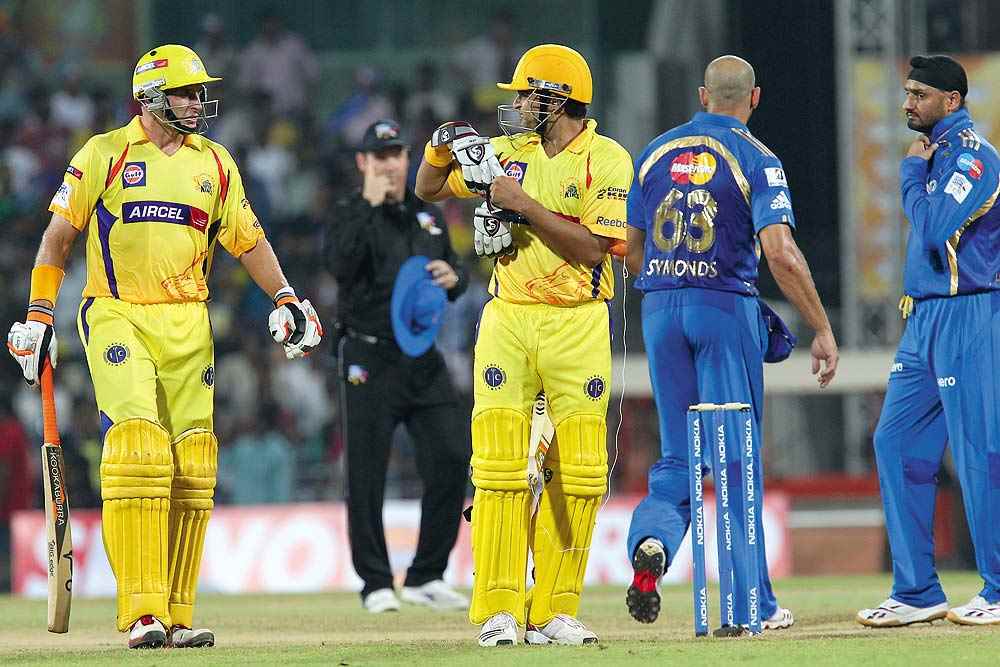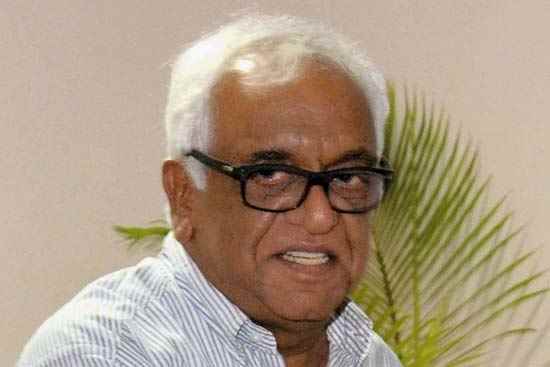The leaked email, the crowd that cheered the opposition, the punch at an airport: Greg Chappell's tumultuous, two-year tenure as India's head coach contains every ingredient you could wish for if you're writing cricket's version of The Damned Utd, the David Peace novel - later adapted into a movie - that tried to get inside Brian Clough's head during his ill-fated, 44-day spell as manager of Leeds United in 1974.
Chappell and India. You can't ask for a more compelling plot or cast of characters. The coach was one of the game's great batsmen and enigmas, upright and elegant but also cold and sneering, a man who once made his brother bowl underarm to kill a one-day game. This man takes over a team of superstars and attempts, perhaps hastily and certainly without a great deal of diplomacy, to remake them in his own image. He precipitates the removal of a long-serving captain who commands a great deal of adoration within the dressing room, and challenges other senior players to break out of their comfort zones without preparing, perhaps, for the inevitable resistance. There are successes, but there's one massive, glaring failure, and with that the entire project comes crashing down.
If you wrote it well, there wouldn't be heroes or villains, just the universal story of proud and insecure men trying and failing to connect with each other. But it hasn't usually been told that way, certainly not in India, where Chappell remains a hugely polarising figure.
Of those who played under him, most of the prominent voices who have written or spoken about Chappell have had almost nothing good to say of him - Sourav Ganguly, needless to say, but others too. Sachin Tendulkar, VVS Laxman, Zaheer Khan, Harbhajan Singh and Virender Sehwag have all stuck the knife in at various points, and all of them have laid one major charge at Chappell's feet, that he was a poor man-manager.
"Greg," Tendulkar wrote in his book Playing It My Way, "was like a ringmaster who imposed his ideas on the players without showing any signs of being concerned about whether they felt comfortable or not."
Perhaps there's some truth to the idea that Chappell didn't know how to get the best out of a diverse group of players, and that he lacked the instinct to be able to tell whom to cajole and whom to kick up the backside. But while one group of players has been unsparingly critical of Chappell's methods, other prominent voices - Anil Kumble, Yuvraj Singh, MS Dhoni, and above all Rahul Dravid - have largely stayed silent on the matter. Irfan Pathan has rejected, on multiple occasions, the widely held notion that Chappell was responsible for his decline as a swing bowler after a promising start to his career. Pathan was one of a group of younger players heavily backed by Chappell, alongside Yuvraj, Dhoni (whose leadership potential Chappell was one of the first to spot) and Suresh Raina.
Of course, players are the last people you would go to for a dispassionate appraisal of their coach's ideas and methods. If Chappell wanted Zaheer Khan dropped, you wouldn't ask Zaheer Khan if he thought it was a good idea. You wouldn't ask Harbhajan or Sehwag, two players whose early careers Ganguly had a major influence on, whether it was right to strip him of the captaincy.
Let's look, therefore, at some numbers.
The Ganguly question is the easiest to answer. Chappell put forward the idea that he step down from the captaincy during India's tour of Zimbabwe in September 2005. From the start of 2001 to that point, Ganguly had averaged 34.01 in 61 Test innings against all teams other than Bangladesh and Zimbabwe.
Excluding matches against Bangladesh, Zimbabwe and the Associates, his ODI numbers in the same period were just as poor: an average of 30.71, a strike rate of 72.32. Since the start of 2003, he had fared even worse against the top eight ODI teams: 1077 runs in 45 matches at an average of 25.04 and a strike rate of 67.39.
There were performance-related issues behind other players' disagreements with Chappell too. Take Khan, for instance. From the end of the Brisbane Test of December 2003, where he bagged a first-innings five-for, to the Karachi Test of January-February 2006, he took 39 wickets in 15 Tests at 42.41. In that Karachi Test and right through that tour of Pakistan, he was visibly pudgy, bowled off a short run-up, and struggled to move the speedometer needle past the 130kph mark.
Khan's fitness - and Sehwag's - had always been a sticking point with Chappell. Left out of India's next two Test series - against England at home and in the West Indies - Khan signed for Worcestershire and enjoyed a tremendous county season, during which he grew fitter and rediscovered his bowling form. He was a rejuvenated force when he returned to Test cricket on the 2006-07 tour of South Africa, and Chappell, writing in his book Fierce Focus, noted that Khan and Ganguly - who was also making a comeback - were two of India's best players on that tour. "Whether they had improved in order to spite me or prove me right, I didn't care. It cheered me greatly to see them in much better shape than they had been when I started in the job."
In ODIs, India were a poor chasing team when Chappell arrived - their last 20 completed chases before he took over had brought them just five wins, four of those against Zimbabwe or Bangladesh - and they realised the best way to become better at it was to keep doing it. They kept choosing to bowl when they won the toss, and eventually became so good at chasing that they won 17 successive matches batting second.
Before Chappell and Dravid joined forces, India had been hugely reluctant to play five bowlers even when conditions demanded it. Under them, it became a routine occurrence. India were lucky, perhaps, to have an allrounder who made it possible, but it's a telling statistic that the highest Pathan batted in 32 ODIs under Ganguly was No. 7, and that was just once, though he scored two half-centuries from those positions and regularly showed promise with the bat. Dravid regularly used Pathan at No. 3, suggesting either that this was his idea in the first place, or that he was far more willing than Ganguly to take on board one of Chappell's. (Pathan himself has suggested it was Tendulkar's idea.)
Under Chappell and Dravid, India often played five bowlers in Test cricket too, showing a willingness to risk losing in order to take 20 wickets and win games. It meant leaving out the sixth batsman, and while Ganguly was the first casualty, the rise of Yuvraj and Mohammad Kaif as ODI regulars knocking hard on the Test door put a bit of pressure on Laxman as well. He was left out of two home Tests against England in 2006, and also had to move up and down the order a fair bit, especially if the batsman left out was one of the regular openers.
This led to the insecurities that Laxman has since expressed in his book, 281 and Beyond, and Chappell, perhaps, didn't do enough to allay them. Chappell admits this failing himself in Fierce Focus, calling his mistakes the "same kinds […] I'd made as captain in my playing days. I didn't communicate my plans well enough to the senior players. I should have let guys like Tendulkar, Laxman and Sehwag know that although I was an agent of change, they were still part of our Test cricket future."
That old man-management thing again. But there was nothing fundamentally wrong with asking a senior player to occasionally sit out games or bat in unfamiliar positions, in order to execute a larger plan for the team's good.
Playing five bowlers, being willing to leave out established players, making fitness a non-negotiable, encouraging players to come out of their comfort zones: if the broad ideas of the Chappell-Dravid era, and the tensions that came out of implementing them, seem eerily familiar, it's because you've seen it all happen - though probably allied with better communication - under Ravi Shastri and Virat Kohli. And that, perhaps, is Chappell's biggest legacy.
Great coaches can get entire teams to buy in to their ideas, and even they - as Clough showed, either side of his Leeds misadventure, at Derby County and Nottingham Forest - need to be at the right place at the right time. Chappell and the India of 2005-07 weren't necessarily made for each other, and the early exit from the 2007 World Cup made that relationship untenable. It may not have lasted too much longer than that in any case, given the breakdown of trust within the dressing room that Chappell contributed to with his tendency to air his criticisms of players to the media.
There isn't a huge deal of evidence from the rest of his coaching career to suggest Chappell had the makings of a great coach anyway. But good ideas are good ideas, no matter how well they're communicated, and Indian cricket continues to benefit from the ones he left behind.

